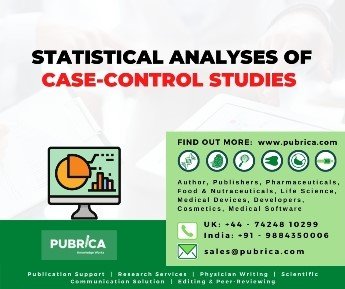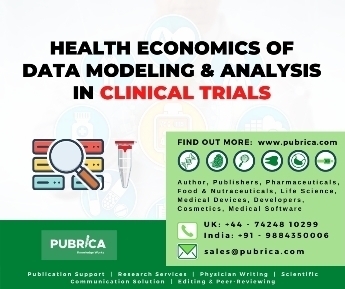
The impact of cardiovascular diseases in patients with respiratory disease
May 13, 2020
Unattainable long-term goals through the application of positive and motivational psychology
June 6, 2020In Brief:
- The risk of bias is defined as the risk of systematic error or a deviation from reporting the truth or an appropriate evidence finding.
- It occurs when there is a systematic flaw or limitations in the study design or the conduct of the study.
- This article describes different assessment tools and the types of study designs for which the tool is applicable along with the flow of how to avoid the risk of bias.
A systematic review guideline will often determine the study design to answer the formulated question, and it is not enough in trusting the evidence of systematic review over observational studies. There are several terms like quality assessment, critical appraisal, or internal validity, which are used for the evaluation of studies supported by the guideline. Whereas in the risk of bias, the bias determines the factor that can affect the observations and findings of the study systematically and report it to be different from the actual conclusion. In other words, a study affected by bias can be inaccurate and thus leads to an inappropriate guideline recommendation. Therefore, inadequate study design or the conduct of the study will give false findings which result in wasting time and resources, and missing opportunity for effective intervention.
Quality assessment or risk of bias assessment helps in regulating and establishing transparency of evidence synthesis (data collection methods, search strategies, etc.) and findings and it is often performed for each study in a review; thus the collected evidence eliminate bias in the outcomes. Generally, a quality assessment outside of a systematic review does not require evidence synthesis method; however, it completely depends upon the utilization of evidence synthesis method. The risk of bias assessment can be done by professionals who may be conducted by the guideline development group or requires a methodological expert or by experiences systematic review researchers. Once the evaluation is done, then it can be used for the synthesis of study results and findings and combined into the complete assessment of the evidence. There are certain common factors which can introduce bias in many research areas, that include
- Selection bias – Participant or Population comparability in a study
- Performance bias – The influence of estimate effect (aspects other than the intervention or exposure of interest)
- Reporting bias – Problems with measurements or classification of outcome (missing information)
The risk of bias is assessed frequently by evaluating the study design and the conduct of the study because it is impossible to determine a specific study has been affected by bias or not.
Different tools used to assess the risk of bias in the systematic review:
- AMSTAR 2 – A MeaSurement Tool to Assess systematic Reviews
- AHRQ RRB – AHRQ tool for evaluating the Risk of Reporting Bias
- AHRQ ORB – AHRQ Outcome and analysis Reporting Bias framework
- GRADE – Grading of Recommendations Assessment, Development and Evaluation
- GRADE-CERQual – GRADE Confidence in Evidence from Reviews of Qualitative research
- SAQAT – Semi-Automated Quality Assessment Tool
- NMA Quality – Framework for evaluating the quality of evidence from a Network Meta-Analysis
- NOS – Newcastle-Ottawa Scale
- AXIS – Appraisal tool for Cross-Sectional Studies
- QUIPS – QUality In Prognosis Studies tool
- RoB 1.0 – Cochrane Risk of Bias tool for randomized trials
- RoB 2.0 – Revised tool for Assessing Risk of Bias in randomized trials
- SYRCLE RoB – SYstematic Review Centre for Laboratory animal Experimentation Risk of Bias tool
- SciRAP – Science in Risk Assessment and Policy
- SIGN – The Scottish Intercollegiate Guidelines Network
- ROBIS – Risk Of Bias in Systematic Reviews
- RoBANS – Risk of Bias Assessment Tool for Nonrandomized Studies
- RoBINS I – Risk of Bias In Non-randomized Studies of Interventions tool
- ORBIT 1 – Outcome Reporting Bias In Trials classification system for benefit outcomes
- QUADAS 2 – Quality Assessment of Diagnostic Accuracy Studies
- PROBAST – Prediction model Risk Of Bias ASsessment Tool
- ORBIT 2 – Outcome Reporting Bias In Trials classification system for harm outcomes
- Reid – Selective reporting bias algorithm
- RTI 2012 – RTI Item Bank for Assessment of Risk of Bias and Precision for Observational Studies of Interventions or Exposures
- RTI 2013 – RTI Item Bank for Assessing Risk of Bias and Confounding for Observational Studies of Interventions or Exposures
- JBI – the Joanna Briggs Institute
- OHAT – Office of Health Assessment and Translation
- Downs Black – Downs Black tool
How to assess the risk of bias?
- Plan your approach
- Identifying an appropriate risk of bias assessment tool
- Be aware of related issues
- Appraise each study
- Report the assessment process
- Use your appraisals to inform the guideline
Determining an appropriate risk of bias assessment tool:
| Study type | Assessment tools | Year | Source |
| Systematic reviews | AMSTAR – 2 | 2017 | https://amstar.ca/Amstar-2.php |
| ROBIS | 2016 | www.bristol.ac.uk/population-health-sciences/projects/robis/ | |
| SIGN checklist | 2014 | https://www.sign.ac.uk/checklists-and-notes.html | |
| Randomized trials | Cochrane RoB 2.0 Tool | 2016 | www.riskofbias.info |
| SIGN checklist | 2014 | https://www.sign.ac.uk/checklists-and-notes.html | |
| Non-randomised studies of interventions (case-control, cohort, etc.) | ROBINS-I | 2016 | www.riskofbias.info |
| SIGN checklist | 2014 | https://www.sign.ac.uk/checklists-and-notes.html | |
| Prognostic: Prognostic factorsRisk prediction modellingOverall prognosis/baseline risk/prevalence/incidence | JBI checklist for prevalence studies | 2017 | http://joannabriggs.org/research/critical-appraisal-tools.html |
| PROBAST | 2014 | www.systematic-reviews.com/probast | |
| QUIPS | 2013 | https://methods.cochrane.org/prognosis/welcome | |
| Diagnostic | SIGN checklist | 2014 | https://www.sign.ac.uk/checklists-and-notes.html |
| QUADAS-2 | 2011 | www.bristol.ac.uk/population-health-sciences/projects/quadas/quadas-2 | |
| Qualitative | CASP Qualitative Checklist | 2018 | https://casp-uk.net/wp-content/uploads/2018/01/CASP-Qualitative-Checklist-2018.pdf |
| GRADE-CERQual | 2017 | https://www.cerqual.org/ | |
| JBI Checklist for Qualitative Research | 2017 | http://joannabriggs.org/research/critical-appraisal-tools.html | |
| Observational studies of exposures (human epidemiology, wildlife) | Navigation Guide risk of bias checklist | 2018 | https://www.cosmin.nl/ |
| OHAT tool | 2015 | https://ntp.niehs.nih.gov/ntp/ohat/pubs/riskofbiastool_508.pdf | |
| In vivo animal studies | Navigation Guide risk of bias checklist | 2018 | https://www.cosmin.nl/ |
| SciRAP tool | 2018 | http://www.scirap.org/ | |
| OHAT tool | 2015 | https://ntp.niehs.nih.gov/ntp/ohat/pubs/riskofbiastool_508.pdf | |
| CRED | 2016 | www.ecotoxcentre.ch/projects/risk-assessment/cred | |
| SYRCLE tool | 2014 | Systematic Review Centre for Laboratory Animal Experimentation | |
| In vitro studies | OHAT tool | 2015 | https://ntp.niehs.nih.gov/ntp/ohat/pubs/riskofbiastool_508.pdf |
| Obtained from: https://www.nhmrc.gov.au/guidelinesforguidelines/develop/assessing-risk-bias# |
In summary, risk of bias assessment is a tool used to regulate findings which are accurate and appropriate, and it is essential to select the risk of bias tool rightly. There are many researches available to help, and it makes things easier to find appropriate tools for assessing the risk of bias. This article describes different assessment tools for a systematic review and the types of study designs for which the tool is applicable along with the flow of how to avoid the risk of bias.
Pubrica provides support in writing a systematic review and offers you complete support across a variety of journals, publications, and books. We provide complete support from translating your concept to incisive report, and our experts team will be with you through the entire publication stages.
Reference:
- Bero, L. A. Why the Cochrane risk of bias tool should include funding source as a standard item. Cochrane Database of Systematic Reviews, 2013.
- Higgins, J. P., J. Savović, et al., Eds. Revised Cochrane the risk of bias tool for randomized trials, 20 October 2016.
- Marshall, I. J., A. Noel-Storr, et al. Machine learning for identifying Randomized Controlled Trials: An evaluation and practitioner’s guide. Research Synthesis Methods, 2016.
- Reeves, et al. AMSTAR 2: a critical appraisal tool for systematic reviews that include randomized or non-randomised studies of healthcare interventions, or both. British Medical Journal 358, 2017.
- Whiting, P., J. Savović, et al. ROBIS: A new tool to assess the risk of bias in systematic reviews was developed. Journal of Clinical Epidemiology 69: 225-234, 2016.



